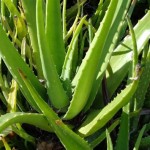Essential Aspects of Low Maintenance Plants for Outdoor Landscapes
Creating a lush and inviting outdoor space doesn't have to be a chore. With the right low-maintenance plants, you can enjoy a beautiful and flourishing garden with minimal effort. Here are some essential aspects to consider when selecting and caring for low-maintenance outdoor plants:
Plant Selection:
Choose plants that are well-suited to your climate, soil conditions, and sun exposure. Native species are often a good choice, as they are adapted to the local environment and require less maintenance. Consider drought-tolerant plants that can withstand dry spells without additional watering.
Soil Preparation:
Proper soil preparation is crucial for plant health and low maintenance. Amend the soil with organic matter such as compost or peat moss to improve fertility and drainage. A well-draining soil will prevent waterlogging and reduce the risk of root rot.
Mulching:
Mulching is essential for retaining moisture, suppressing weeds, and regulating soil temperature. Spread a 2-3 inch layer of organic mulch, such as bark chips or shredded leaves, around your plants. This will help reduce watering needs and keep the soil healthy.
Watering:
Water your plants deeply but infrequently. Allow the soil to dry out slightly between waterings to prevent waterlogging. Deep watering encourages roots to grow deeper, making plants more drought-tolerant. Avoid overwatering, as it can lead to root rot and other problems.
Fertilization:
Low-maintenance plants generally require minimal fertilization. Fertilize them once or twice a year with a balanced fertilizer to promote healthy growth. Avoid over-fertilizing, as it can burn the roots or lead to excessive foliage growth at the expense of flowers and fruit.
Pruning:
Pruning is essential for maintaining the shape and size of your plants. Remove dead or diseased branches, and prune overgrown areas to promote air circulation and reduce the risk of pests and diseases. Some plants, such as perennial grasses, may benefit from regular cutting back to encourage healthy new growth.
Pest and Disease Management:
Low-maintenance plants are generally less susceptible to pests and diseases, but it's important to monitor them regularly. Use organic methods, such as natural predators, companion planting, or homemade remedies, to control pests and diseases. Avoid using chemical pesticides whenever possible.
By following these essential aspects, you can create a low-maintenance outdoor landscape that will bring you years of enjoyment. Choose the right plants, prepare the soil, mulch regularly, water wisely, fertilize sparingly, prune judiciously, and manage pests and diseases naturally. With a little care and attention, you can have a beautiful and thriving garden that requires minimal effort and rewards you with a vibrant and welcoming outdoor space.

15 Best Low Maintenance Plants Easy To Grow Outside

10 Best Low Maintenance Plants Guide To A Effort Garden

The Best Low Maintenance Plants For Landscaping

Brilliant Low Maintenance Plants For Beautiful Gardens The Middle Sized Garden Gardening Blog

Top 10 Low Maintenance Plants That Are Easy To Look After All Year Long Flower Power

Low Maintenance Plants Gardens For The Win Meadowbrook

Top 21 Low Maintenance Plants For Your Garden Design

10 Best Low Maintenance Plants Guide To A Effort Garden

How To Create A Low Maintenance Garden Gardening Tips

Brilliant Low Maintenance Plants For Beautiful Gardens The Middle Sized Garden Gardening Blog








